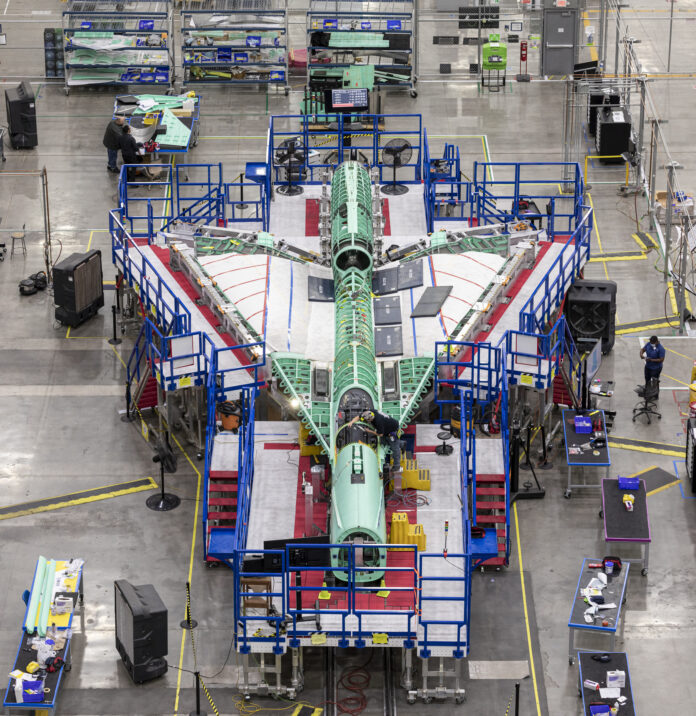The X-59 experimental aircraft is complete.
The plane is manufactured by Lockheed Martin Corp. at its Skunk Works factory in Palmdale.
The full tail assembly was attached to the X-59 in mid-April, and the aircraft is undergoing final wiring and system checkouts as it prepares for integrated ground testing, which will include engine runs and taxi tests, according to Lockheed.
The first flight is planned for later this year.
The X-59 is the centerpiece of NASA’s Quesst mission to develop a plane capable of reducing the sound of a sonic boom to that of a car door slamming.
When completed, the X-59 will be 100 feet long with a wingspan of 29.5 feet. NASA commissioned Collins Aerospace to make a large-format display system that allows the X-59 pilot to safely fly the craft — whose design does not include a front window — using a monitor to display images from two cameras outside the aircraft.
For years, NASA has been wanting to reduce the sonic boom caused by commercial aircrafts.
That would be the main use for the technology developed by the X-59 program, as opposed to a military use.
Tests conducted by NASA determined that a level of 75 perceived decibels was adequate.
The challenge that NASA gave Lockheed and other aerospace companies vying for the contract to build the X-59 – awarded to Lockheed in 2018 and valued at nearly $248 million – was that they had to design a plane with a sonic boom of 75 perceived decibels or less, or the equivalent of a car door slamming from 20 feet away.
By comparison, distant thunder is about 73 perceived decibels, a basketball bouncing is about 90, and a hand clap is about 95.
After flight tests at NASA Armstrong Test Research Center at Edwards Air Force Base in the Antelope Valley, the X-59 will go to about six locations around the country for additional flights.
Millions of people will be exposed to the test flights, who can provide feedback on their perception of noise from the X-59, Mike Buonanno, chief engineer for the aircraft, said in an interview with the Business Journal from July 2021.
“There is going to be a rich data base to draw from,” Buonanno added.
The data will later be shared with Federal Aviation Administration officials and international regulators to change the rules that prohibit supersonic flight over land in the U.S. and other countries, “which would open the doors to new commercial cargo and passenger markets to provide faster-than-sound air travel,” NASA officials said.
